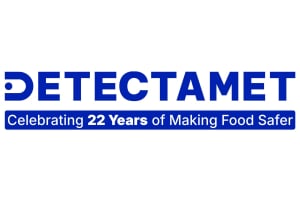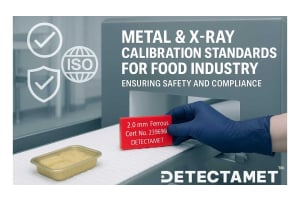
In the highly regulated food manufacturing industry, every detail matters when it comes to preventing contamination. Among the myriad of items used daily, seemingly innocuous stationery like pens can pose a significant risk if not properly controlled. This is especially true with the stringent requirements set forth by the BRCGS Global Standard for Food Safety, particularly its latest iteration, Issue 9.
For any facility aiming for or maintaining BRCGS certification, understanding and implementing these specific guidelines for metal detectable stationery is not just good practice—it's a mandatory step towards robust food safety compliance.
Understanding BRCGS Issue 9: A Sharper Focus on Foreign Body Control
The BRCGS Global Standard for Food Safety, Issue 9, which became auditable in February 2023, places an even greater emphasis on foreign body control. While previous versions touched upon it, Issue 9 introduces more detailed and prescriptive requirements, especially concerning small, frequently used items such as pens.
Clause 4.9.6.2 of BRCGS Issue 9 explicitly mandates that "Pens used in open product areas shall be controlled to minimise risk of physical contamination (e.g. designed without small external parts and detectable by foreign body detection equipment)". This means that simply having a "detectable" pen might no longer be enough; the standard now outlines specific design features to minimize risk.
The "Pen Problem": Why Small Items Pose Big Risks
Pens, markers, and other stationery items are ubiquitous in food processing environments. They are used for logging data, marking batches, and various administrative tasks, often in close proximity to open product areas. The inherent "pen problem" arises from their design: traditional pens often contain small, easily detachable parts (like clips or springs) or can shatter into tiny, hard-to-detect fragments if dropped or broken.
These minute shards can be incredibly challenging for standard metal detectors or X-ray systems to pick up, especially against the "background signal" of the food product itself. This makes them a particularly high-risk source of foreign body contamination, capable of causing serious harm to consumers and leading to costly product recalls.
Key BRCGS Requirements for Pens: The Mandates You Need to Know
To truly be BRCGS compliant metal detectable pens, manufacturers and food facilities must adhere to several specific design and usage mandates:
- Designed Without Small External Parts: Issue 9 emphasizes "small external parts" such as lanyard loops and pocket clips. These should be an integral part of the pen, not detachable components that could break off and contaminate the product.
- Shatterproof Construction: This is a critical requirement. Pens must be designed to be shatterproof, meaning they should bend or break into only a few large, detectable pieces rather than splintering into minute, undetectable shards. This prevents tiny fragments from being flung far and wide in an uncontrolled manner.
- Absence of Traditional Metal Springs: Counterintuitively, traditional metal springs in pens are often difficult to detect due to their small size and orientation as they pass through a detector. BRCGS Issue 9 advises against their presence, and innovative designs now feature unique cartridge suspension systems that offer a smooth writing experience without this risk.
- Minimum Number of Components: Pens should be constructed with the minimum number of components possible. Fewer parts mean fewer potential foreign bodies if the pen breaks down.
- Fully Detectable Ink Refills: Some advanced detectable pens now incorporate fully detectable ink refills, ensuring that every component of the writing instrument, including the ink cartridge body and end stop, is identifiable by foreign-body detection equipment.
Beyond Pens: Other Detectable Stationery
While pens receive significant attention, the principles of detectability extend to other stationery items commonly used in food production areas. This includes:
- Metal Detectable Markers: Dry erase markers, permanent markers, and highlighters are available in detectable versions, ensuring they too can be identified if lost.
- Metal Detectable Clipboards: Both plastic and stainless steel clipboards are produced with detectable properties, offering an added layer of safety for documentation.
- Metal Detectable Tape: Another key item for ensuring all operational consumables are traceable.
Achieving Compliance: Practical Steps
To ensure your facility's stationery meets the rigorous requirements outlined in BRCGS Issue 9, consider these practical steps:
- Audit Your Current Stationery: Check your existing pens and other stationery items against Clause 4.9.6.2 of the BRCGS standard.
- Conduct a Shatter Test: Physically test your current pens. Can you account for every splinter and shard if they break? If not, they are likely non-compliant.
- Inspect for Metal Springs: Do your factory pens contain traditional metal springs? If so, consider switching to alternatives that eliminate this hard-to-detect component.
- Source Certified Products: Partner with suppliers who explicitly offer BRCGS compliant metal detectable pens and other stationery, providing documentation of their adherence to these specific standards.
By proactively addressing these detailed requirements, you not only enhance your food safety compliance but also significantly reduce the risk of foreign body contamination, protecting your products, your consumers, and your brand's invaluable reputation.
In the face of increasingly stringent food safety standards, particularly the detailed mandates of BRCGS Issue 9, proactive compliance is not just best practice—it's essential for survival and success in the food processing industry. For facilities looking to eliminate the risks associated with foreign body contamination from stationery, partnering with a specialist provider is a critical step.
Detectamet stands at the forefront of this specialized field, offering a comprehensive suite of metal-detectable and X-ray visible products designed explicitly to meet and exceed these regulatory demands. Their pens, markers, and other stationery items are engineered to address the specific "pen problem" outlined by BRCGS, featuring shatterproof construction without high-risk components like small external parts or traditional metal springs. By incorporating Detectamet's solutions into their food safety management systems, manufacturers can confidently ensure every component is accounted for, transforming a common contamination hazard into a controlled and compliant element of their operation. This commitment not only secures BRCGS certification but, more importantly, protects consumers and safeguards a brand's invaluable reputation.
 Detectamet UK (English - £ GBP) - Click here to change your currency, region or language
Detectamet UK (English - £ GBP) - Click here to change your currency, region or language






